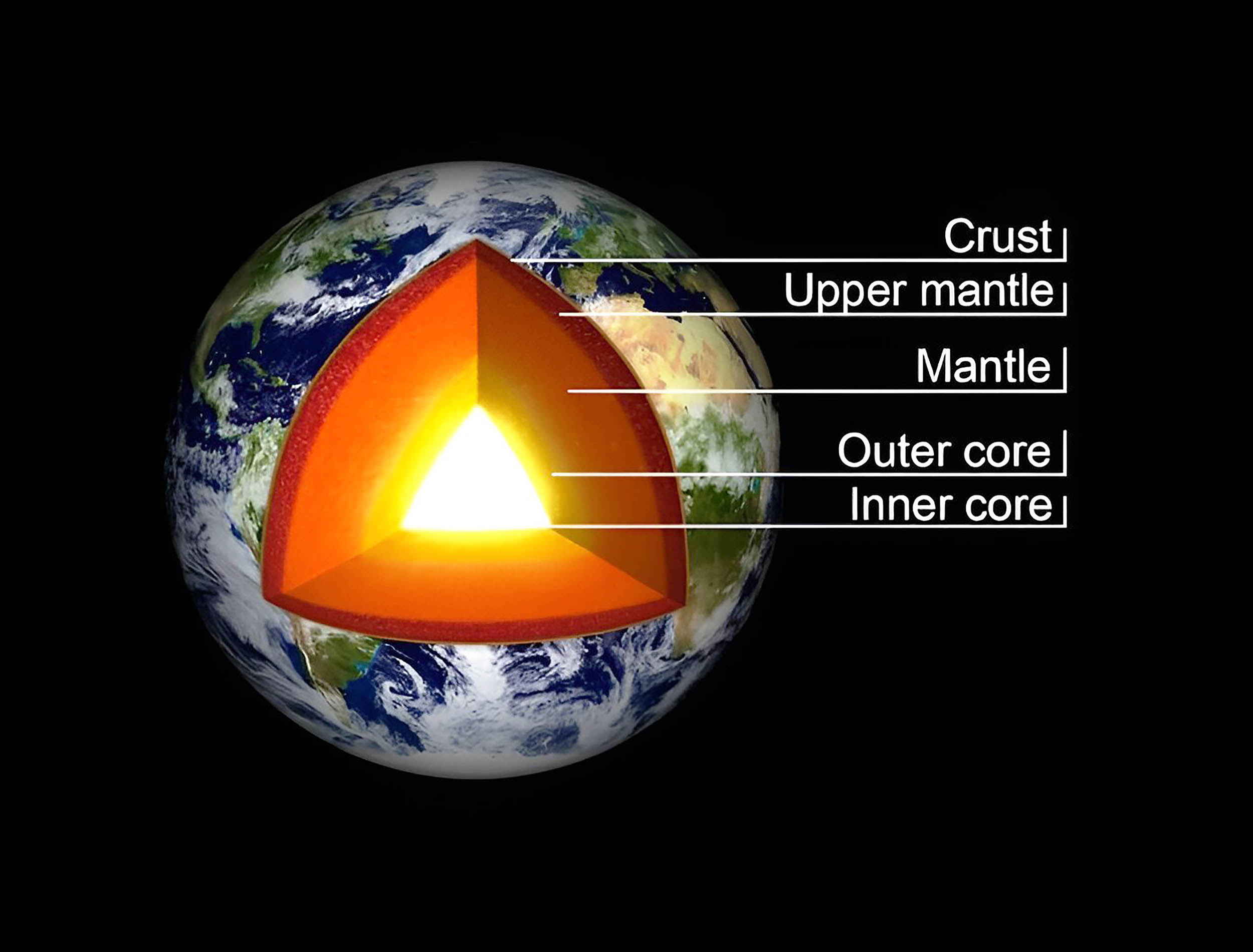New high‑pressure experiments show that the chemical recipe of Earth’s deep mantle has barely budged since our planet formed 4.5 billion years ago.
The finding, drawn from crushed rock samples held at pressures rivaling those 1,800 miles down, reshapes ideas about how oxygen and metals move through our planet’s interior.
The research centers on bridgmanite, the most common mineral on Earth yet one that never reaches the surface.
After being squeezed until it glowed at 4,000 °F, the mineral kept almost the same ratio of ferric iron to total iron that scientists infer for early Earth, hinting at an enduring redox balance.
Lead author Fei Wang, Bavarian Research Institute of Experimental Geochemistry & Geophysics, and colleagues combined the lab data with thermodynamic models to track iron chemistry through the lower mantle.
Why Earth’s mantle matters
Geologists care about the lower mantle because it locks in the planet’s earliest history and influences how volcanoes feed the surface.
If its chemistry drifts over time, gases like carbon dioxide and water entering the atmosphere would shift too, altering climate and habitability.
Early models suggested that violent mixing during a global magma ocean phase might have reset the interior’s redox state.
Yet samples of ancient diamonds indicate the volatile mix inside Earth has matched today’s values since at least 2.7 billion years ago. Those diamonds act as time capsules, trapping mantle gases long before complex life emerged.
Bridgmanite under crushing pressure
In the new study, the team packed powdered silicates with tiny metal sensors, then drove them to 730,000 pounds per square inch inside a multi‑anvil press.
Temperature was held near 2,300 K so the crystals mirrored lower‑mantle conditions.
Despite equilibrium with metallic iron, bridgmanite still carried roughly 17 percent of its iron in the oxidized state, a figure almost identical across pressures from 400 to 1,000 miles depth.
Similar laser‑heated diamond‑anvil experiments last year reached the same conclusion, showing ferric‑iron ratios unchanged by pressure across the mid‑mantle.
The key variable turned out to be temperature: hotter crystals shed ferric iron, while cooler ones gain it.
That trend explains why Earth’s current lower mantle may sit near the threshold where metallic iron precipitates, matching seismic hints of scattered iron blobs.
Earth’s mantle in the early days
Thermodynamic modeling stitched the lab data into a planet‑wide picture, simulating how the Fe³⁺/ΣFe ratio evolved as the magma ocean cooled.
The results imply that only 0.2 weight percent of metallic iron separated into the core while the rest of the solid mantle held steady.
Such a small escape fits with earlier calculations showing that iron droplets wet grain boundaries and percolate downward quickly at near‑solidus temperatures.
Once the mantle fully crystallized, further oxidation stalled because the dominant substitution of Fe³⁺ and Al³⁺ in bridgmanite is remarkably pressure‑insensitive.
This built‑in stability means later plate recycling and plume activity simply stir existing chemistry rather than overhaul it.
As a result, the upper mantle’s oxygen level rose to present values through slow mixing instead of fresh inputs.
Stability over time
Observations outside the lab echo the model. Seismic studies find that the bulk sound speed of the mid‑mantle matches compositions with constant iron valence, leaving little room for dramatic chemical layering.
“These processes played a major role in the Earth being surrounded by an oxygen‑rich atmosphere,” said Dr. Catherine McCammon of the University of Bayreuth.
Volatile ratios in volcanic gases also line up with Archean samples, reinforcing the idea of a long‑lived interior equilibrium.
Diamond data add another hint: helium, neon, and argon proportions trapped in 2.7‑billion‑year‑old stones mirror those in modern basalts.
“This was a surprising result. It means the volatile‑rich environment we see around us today is not a recent development,” noted Dr. Michael Broadley of University of Lorraine.
Plate tectonics and life on Earth
A chemically constant interior simplifies models of atmospheric evolution because surface reservoirs can be traced back to a fixed deep source.
It also suggests that catastrophic oxidation events were not required to set the stage for photosynthesis.
For plate tectonics, a stable redox budget means that slabs sinking today enter roughly the same environment as their ancient counterparts.
That constancy helps seismologists interpret deep‑Earth images without invoking hidden chemical layers.
Earth’s mantle still holds mysteries
Researchers now want to know whether small pockets of iron‑rich melt lurk near the core‑mantle boundary and how they affect heat flow.
Upcoming experiments that combine synchrotron X‑rays with electrical measurements aim to pin down the conductivity of iron‑bearing bridgmanite at even higher temperatures.
Another open issue is how water cycles through Earth’s deep mantle without altering its oxidation state, a puzzle that links deep‑Earth chemistry to ocean volumes over geologic time.
Answers will refine our picture of a planet that, deep inside, appears to have kept the same recipe since birth.
The study is published in Nature Geoscience.
—–
Like what you read? Subscribe to our newsletter for engaging articles, exclusive content, and the latest updates.
Check us out on EarthSnap, a free app brought to you by Eric Ralls and Earth.com.
—–
